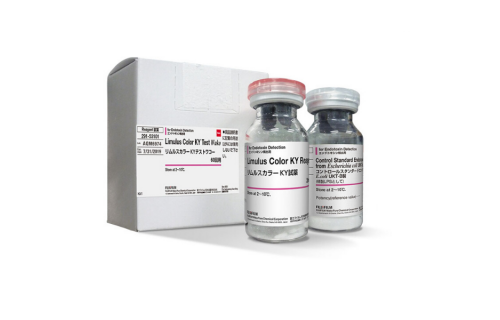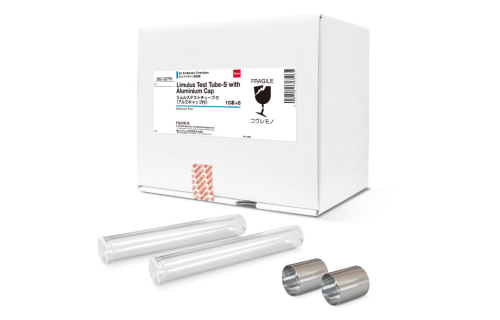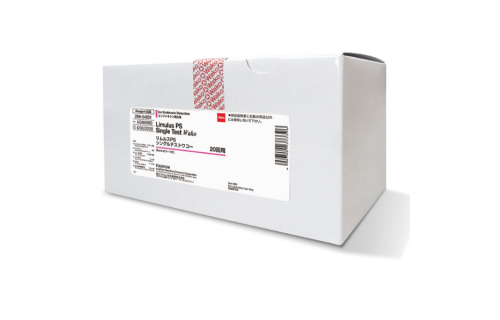Overcoming sample interference in the LAL assay
What is sample interference?
Sample interference occurs when a substance or a process developing in a sample leads to incorrect test results. The potential consequences of sample interference are serious, including a misleading test interpretation or even an incorrect diagnosis. Sample interference can be both endogenous and exogenous. Endogenous interference occurs due to substances naturally present in a sample. Exogenous interference occurs due to external substances or processes, including drugs, additives, collection tube components, processing steps, clot formation, or contamination.1 Due to the negative and potentially severe consequences of sample interference, the risk for it should always be considered when designing and performing tests.
The Limulus amebocyte lysate (LAL) assay
The Limulus amebocyte lysate (LAL) assay is employed to detect the presence of bacterial endotoxins in analyzed samples. Endotoxins are released from the outer membrane of gram-negative bacteria primarily after bacterial lysis. If endotoxins gain parenteral access into the human body, they can lead to inflammation, fever, shock, and even death.2 The LAL assay is based on the incubation of protein extracted from the blood of horseshoe crabs with an analyzed sample. If endotoxin is present in the sample, a clotting reaction develops.3 The clot can be visualized qualitatively, which is designated as a gel-clot assay. Quantification of the endotoxin can be performed by measuring turbidity (a turbidimetric LAL assay) or by colorimetric determination in a modification of the gel-clot assay (a chromogenic LAL assay).
Sample interference in the LAL assay and interfering factors
In an early study, the possibility of interference in the LAL assay was evaluated for 333 drug products. If the samples were not diluted or treated in any manner, 236 (71%) of these drug products interfered with the test.4 A variety of factors may create a risk of sample interference in the LAL assay either by activating the same chain of enzymatic reactions as the LAL reagent or by activating another pathway leading to coagulation and turbidity. Interfering factors may include the ionic strength and pH of the reaction mixture, organic substances with chelating or anticoagulant properties, oxidants or other compounds with enzyme denaturing properties, interfering factors that mimic the action of endotoxins (such as (1→3)-ß-D-glucans, serine proteases, and cellulose filters), or nanomaterials.5,6 Moreover, colored compounds may interfere with the LAL chromogenic assay.5 There are various strategies to overcome sample interference in the LAL assay. Notably, if treatments of the reagent mixture are used to reduce sample interference, the modified assays should be validated for their ability to detect endotoxins.5
Strategies for reduction of sample interference in the LAL assay5,6
Sample dilution
Diluting samples to a degree, at which the interfering factor no longer affects the test results, but the endotoxin is still detectable, is the most widely applied strategy to overcome sample interference in the LAL assay. The highest dilution, at which the endotoxin can be detected, is known as the maximum valid dilution (MVD). In many cases, sample dilution is sufficient to overcome sample interference and should always be attempted first.
Maintaining an optimal pH range
The pH of the reaction mixture should be maintained within an optimal range, which is most commonly 6.0–8.0. However, the specific pH range for each LAL assay kit should be strictly observed. The optimal pH range may be achieved by the buffering capacity of the LAL reagent. In addition, dilution can optimize the pH of the reaction mixture. If these measures are not sufficient, specific buffers promoting the optimal pH range can be used to reconstitute the LAL reagent or sample. Finally, the addition of an acid or base may help adjust the pH.
Correcting excessive concentrations of divalent cations
Divalent cations, such as Ca2+ and Mg2+, also can influence the LAL reaction. Excessive concentrations of these cations may neutralize the negative charge of endotoxins, promote endotoxin aggregation, decrease endotoxin activity, and lead to reaction inhibition. Dilution is generally used to decrease cation concentration. If this is insufficient, ultrafiltration can be used to separate the endotoxin and the interfering substances.
The significance of sample interference prevention in the LAL assay
The LAL assay is the most widely used test for endotoxin detection. However, risks of sample interferences exist and may have deleterious consequences. Sample dilution is generally first attempted to overcome sample interference and is in many cases sufficient. If this approach is not successful, optimizing the pH range and ionic strength or removing interfering compounds may be employed. However, if treatments of the reaction mixture are used to overcome sample interference, the modified assay should be validated for its ability to detect endotoxins.
Literature sources
- Dimeski G. Interference testing. The Clinical Biochemist Reviews 2008; 29 (Suppl 1): S43–S48.
- Sampath VP. Bacterial endotoxin-lipopolysaccharide; structure, function and its role in immunity in vertebrates and invertebrates. Agriculture and Natural Resources 2018; 52 (2): 115–120.
- Novitsky TJ. Biomedical applications of Limulus Amebocyte lysate. J.T. Tanacredi et al. (eds.), Biology and Conservation of Horseshoe Crabs, DOI 10.1007/978-0-387-89959-6_20, Springer Science+Business Media, LLC 2009.
- Twohy CW, Duran AP, Munson TE. Endotoxin contamination of parenteral drugs and radiopharmaceuticals as determined by the Limulus amebocyte lysate method. PDA Journal of Pharmaceutical Science and Technology 1984; 38: 190–201.
- Dawson ME. Interference with the LAL test and how to address it. LAL Update 2005; 22(3): 1–5.
- Interfering factors in the LAL test. Fujifilm. https://www.wakopyrostar.com/blog/kit-lal/post/interfering-factors-in-the-lal-test/






